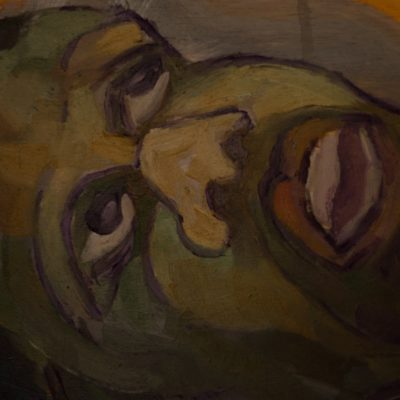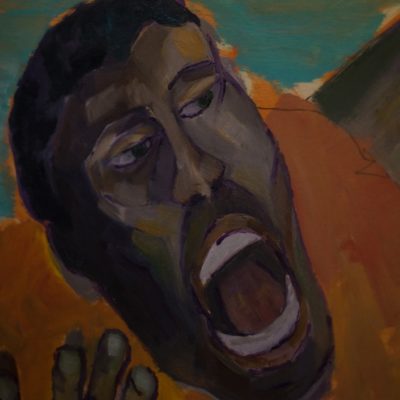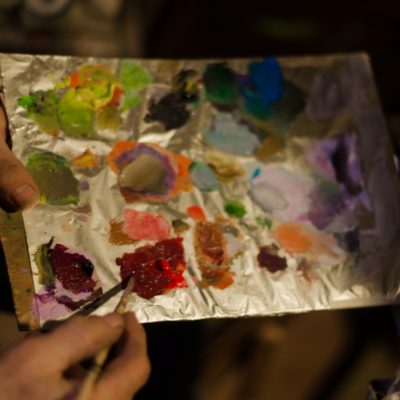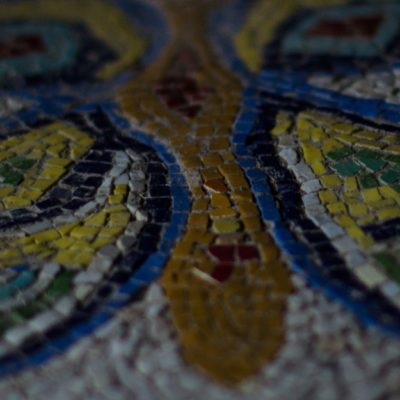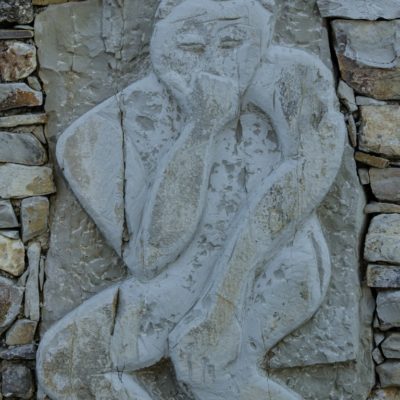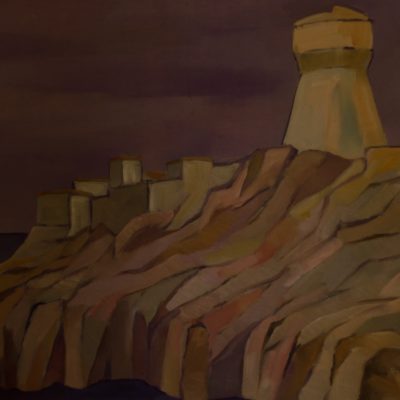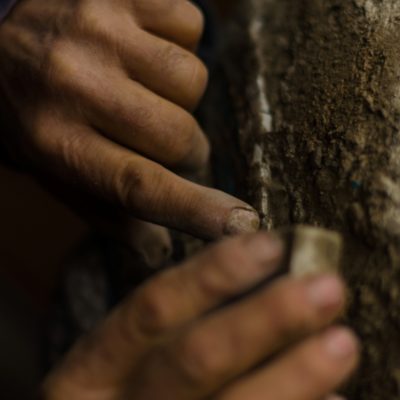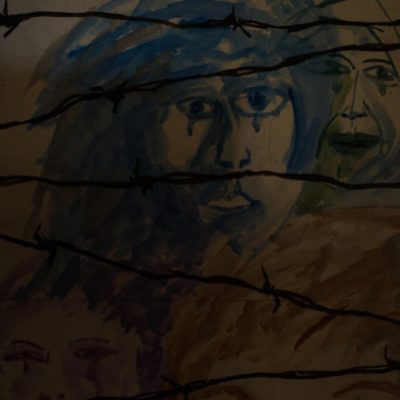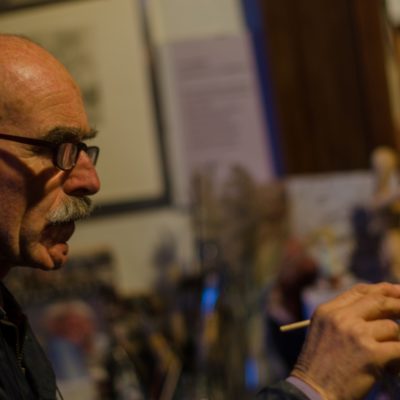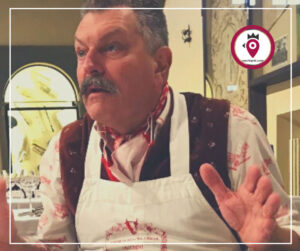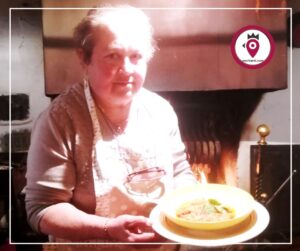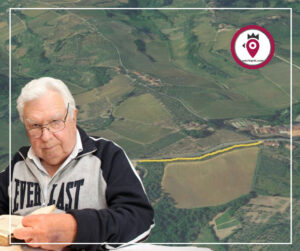Articolo disponibile anche in: Italian
Together we’ll be exploring a fantastical world.
A beautiful place filled with statues and bas-reliefs, with cypresses made from terracotta and Florence-inspired ceramic works.
It’s above Greve in Chianti, at the end of via di San Cresci, at Podere Somigli.
Here, to welcome us and act as our personal guide, we find Alfredo Correani: peasant and award-winning artist, multifaceted grandfather of two beautiful grandchildren.
Born in Scandicci in ’47, he used to live near the river Arno until he arrived in Greve in Chianti, on the farm he now manages together with his whole family.
He’s accustomed to presenting his works, but now he’s looking a little in awe in front of our small tape recorder.
He leads us into his studio, where we enter a sea of colours, brushes, easels and paintings of all sizes; we’re immediately struck by its canvas showing vineyards and landscapes in various seasons.
And the paintings representing migrants.
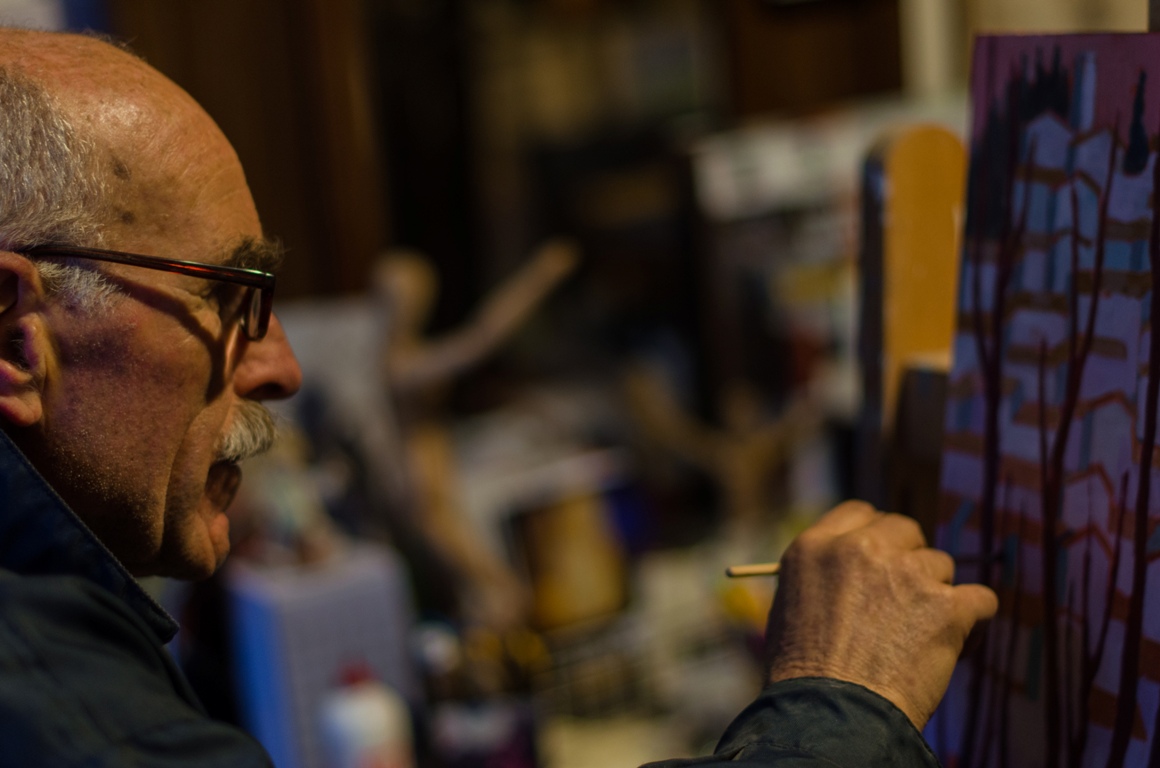
“I love painting above all else – says Correani – I started in the 60’s by attending the Art Institute in Porta Romana. From Antella (I used to live there) it took more than an hour to get there, but I loved being at art school, learning different tecniques. But it was with brushes in hand that I really felt at home. However, I understood that I really could not do without it during my military service: I was in the Paratroopers and I had not brought anything with me to paint…”.
“As the weeks went by – he recalls – despite all the strong emotions of parachuting and military life, I felt that I was missing something, a growing feeling that I couldn’t understand. Until one day I found myself in front of a stationery store, I went in and bought colours, brushes and canvases: when I got back to the barracks I started painting and I realised I couldn’t live without my art”.
As he speaks, one can clearly see how remembering that period moves him deeply. There’s sincerity and emotions in his voice: “I also create other things, work with ceramic and terracotta, I make sculptures and mosaics. It’s how I manage to satisfy all my ideas and my desires. And by creating art, I make this place special , full of energy that only artistic creation can transmit. One of my works is also part of Slow Road, an artistic and naturalistic path that goes from the Museum of San Francesco to Montefioralle, San Cresci and then takes you back to Greve in Chianti”.
Looking at his canvases, you can recognise a particular trait: “My paintings developed their own style once I returned from the military; I looked up my professors at the Art Institute and began to attend their studios, becoming their pupil. I especially remember Master Renzo Grazzini, a man of fantastic humility and simplicity. A person who helped me a lot, and not only with my paintings; he taught me many things about the use of colours and stroke. Sometimes I contemplate his work, drawing brilliant inspiration from it”.
“At that time – he recalls – I found my color palette, which is made up of 4-5 strong colours. Earthy colours such as Siena, green, ochre and purple; they are not easy to use and combine, but if managed with care they give strength and character to the painted subjects, they manage to create movement and strong contrasts. After Master Grazzini, I was a pupil of Master Franco Messina: I started attending his Piccola Accademia d’Arte in via del Giglio – it was the mid Seventies – that was open in the evening, made especially for people like me, who were working. I was a hairdresser at the time…”.
And then artistic life took its rhythm: “After two years we made an exhibition at the Cinghiale Bianco, an art gallery next to the Ponte Vecchio. We were six exhibitors, and it was an exceptional debut. I still remember that the police had to intervene to regulate the turnout of visitors. From that moment I started exhibiting my work with other artists, until 2000, when pushed by a friend – who is an art critic – I did my first solo exhibition. I exhibited about 20 canvases representative of my work, and the feedback was absolutely positive. So I’ve been carrying on showing my works to the public and experimenting with new things”.
Outside his studio there’s a garden, with a magnificent view of the Colognole Castle and the whole Greve valley. A truly breathtaking landscape.
“Art is a way to express my sensations – he sighs – my emotions give me inspiration. I love landscapes, showing our region; I love to represent man’s ability to shape our world. That’s how some of my pictorial projects originate, such as I confini della regione and Il tracciato dell’Arno (The region’s borders and The route of the river Arno)”.
“I really like drawing vines – he reflects – because I work with these plants, I touch them, I feel their roughness, strength and elasticity; I see their development up to the production of grapes, and all the stages of interactions with man and the passing of time”.
“I’ve got an anedocte to tell you – his smile widens – As soon as I retired I went to spend three days alone on Elba Island, just to draw the vines that overlook the sea. I had such a beautiful experience… I slept in the car and made do with what I had. Three days dedicated to work and passion. At the moment I want to paint migrants and migrations”.
The voice becomes serious, the gaze focused: “Thinking that they are running away from their land in search of the unknown, makes me understand how much suffering they must feel in their hearts. And it’s clear that many people cannot understand their pain. This will be an important page in the history of our times, and I’d like to represent the reality of our present. I made an exhibition at the Museum of San Francesco dedicated to this important theme, with barbed wire as the common feature of all the works. I’ll be showing again these paintings at the Murate, in Florence, this June. I was awarded the First Prize of the Giglio Blu Award with a work on this theme”.
“My future? I see it here – he answers looking around – in my land, with my family. I’m teaching my grandchildren to draw, and I want to continue to express myself through art. I don’t want to stop…” .
Giulio Pecorini
